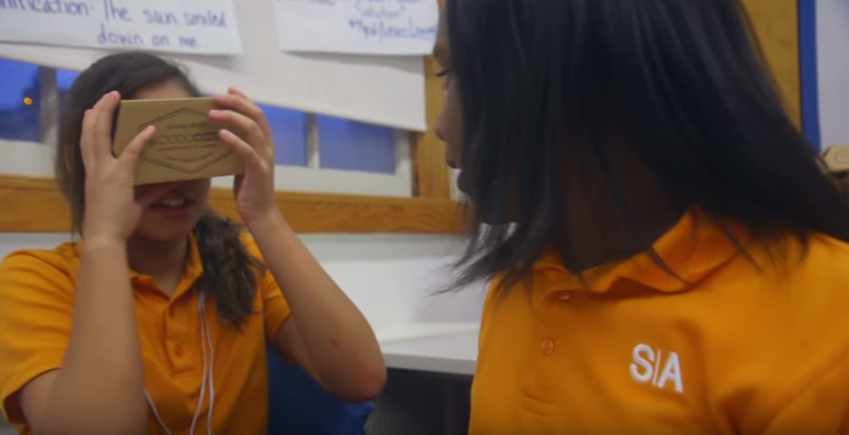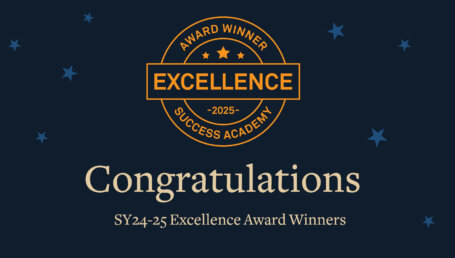
A few months ago, the sixth graders in my history class toured Boston to learn more about the Colonial period. We explored famous sites along the Freedom Trail, including the city’s oldest surviving church, the wooden house where Paul Revere lived, and the graves of Samuel Adams, John Hancock, and other important figures of the time.
But my scholars didn’t have to leave Harlem to take in Boston’s historic sites. For this field study, they used virtual reality viewers — simple devices made of cardboard that work with a smartphone and let users experience an immersive, three-dimensional environment.
But my scholars didn’t have to leave Harlem to take in Boston’s historic sites.
At Success Academy, students already use smartphones, tablets, and other electronic devices to access texts, watch videos, and conduct research; now, a few teachers like me are exploring whether virtual reality can help students learn faster and become more motivated. Lessons about cellular biology or the solar system, for example, can become more accessible and engaging when students use this technology to see inside the human body or to explore Mars.
I was interested in piloting a virtual-reality lesson to help my scholars understand why the citizens of Boston chose to preserve buildings and erect memorials to people from the Colonial era. They had been reading about these places for weeks, but none of them had visited these historic sites or were aware of how well they have been preserved.
For the lesson, students first had to conduct research on the Freedom Trail and choose three sites to visit with a partner. Then, they received a virtual reality viewer, which was no more than a cardboard box with Velcro, two lenses, and a slot for a smartphone. Each team also was given a phone loaded with Google’s Street View app. To visit a site, students simply searched for it on the app and slipped the phone into their cardboard viewer. When they peered through the lenses, their jaws dropped. Instantly, they were seeing Paul Revere’s house or exploring the graves in the Granary Burying Ground. The images they saw were a collection of virtual reality panoramas, and as they moved their heads from side to side or up and down, more of the landscape became visible.
I was excited to see my sixth graders so engaged and to hear them ask questions about the monuments they were seeing. At one point, a scholar asked: Why do so many buildings in Boston still fly the British flag? His question sparked a lively discussion about the enduring influence of the Colonial period on present-day Boston and the merits of historical preservation. By the end of class, they were making comparisons between the monuments in Boston and similar reminders of the Colonial era in New York City. They left my class continuing to discuss the ways we remember our nation’s history.
Watch the video and see how, in just a single lesson, my scholars were able to experience many of the same places they had spent weeks reading about in class by peering through a cardboard virtual reality box.










